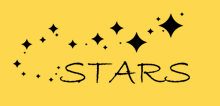Mentor
Dr. Anthony Grajeda
Abstract
Recent critics of Jorge Luis Borges’s “The House of Asterion” (1947) have traced the author’s revisions in the original manuscript, charting his changing arrangement of information through the text. This essay investigates the information itself through structuralist and historicist theory. A structuralist reading analyzes Asterion’s worldview and shows how various narrators dock the integrity of his voice. Historicism probes aspects of religion, biology, and architecture to limn the true complexity of Asterion’s ties with society. Together, these theories reveal a trove of intricate intrigue and doubt. In this study I examine how Asterion, a reinvention of the Minotaur, is painstakingly shaped as a tragic figure. I describe how his trap is not a labyrinth but a gross misunderstanding, one which bars him from humans trapped in their own inaccurate views. With this groundbreaking short story, Borges accounts for the Minotaur with novel explanations while challenging many facets of his myth.
Recommended Citation
Chiovari, Evan
(2021)
"The Minatory Minotaur: Demythologizing Myth in “The House of Asterion”,"
The Pegasus Review: UCF Undergraduate Research Journal: Vol. 14:
Iss.
1, Article 6.
Available at:
https://stars.library.ucf.edu/urj/vol14/iss1/6
Included in
Ancient History, Greek and Roman through Late Antiquity Commons, Latin American Literature Commons

